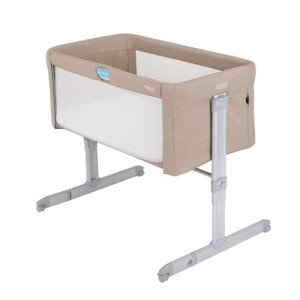Why Cot Newborn Should Be Your Next Big Obsession
Cot for Newborns: A Comprehensive Guide
Selecting the right sleeping arrangements for a newborn is one of the most substantial choices parents face. Amongst the basics for new moms and dads is a cot, which acts as a safe, comfortable sleeping space for the baby. This post will explore the numerous kinds of cots readily available, essential safety factors to consider, pointers for choosing the best one, and upkeep guidelines to make sure resilience and safety.
Types of Cots for Newborns
When it pertains to cots, there are several options in the market. Each type has its distinct features and benefits. Below is a table summing up the various kinds of cots readily available for newborns.
Type of Cot
Description
Pros
Cons
Requirement Cot
A classic crib with fixed sides.
Durable and durable; great for long-term usage.
Can be bulky; may not fit in smaller areas.
Cradle
A small, rocking cot designed for infants.
Portable and calming for infants.
Limited use as baby grows; less steady.
Moses Basket
A lightweight basket with handles.
Extremely portable; comfortable for babies.
Shorter life-span; generally not ideal for older babies.
Travel Cot
A collapsible cot suitable for travel and short-term usage.
Easy to transfer; normally easy to set up.
May lack toughness; not as visually pleasing.
Co-sleeper Cot
Connects to the parents' bed, allowing proximity.
Promotes bonding; breastfeeding benefit.
Restricted area; frequently more expensive.
Convertible Cot
Can transform from a crib to a toddler bed.
Adapts with baby's development; long-term investment.
Greater initial expense; assembly might be needed.
Essential Safety Considerations
When selecting a cot for a newborn, security needs to constantly be the primary concern. Here is Best Cot Beds of critical security standards and guidelines to consider.
- Standards Compliance: Ensure the cot meets security standards set by regulatory bodies such as the Consumer Product Safety Commission (CPSC) in the U.S. or the European security requirements.
- Slat Spacing: The range between cot slats need to not go beyond 2 3/8 inches (6 cm) to avoid a baby's head from getting stuck.
- Stability: The cot must be durable and steady. Shake the cot before purchasing to guarantee it doesn't wobble.
- Mattress Fit: The mattress must fit comfortably into the cot, with no gaps larger than 2 fingers between the bed mattress and the cot sides.
- No Hazardous Materials: Check for non-toxic finishes and products, making sure that the cot is devoid of harmful chemicals.
- Eliminate Clutter: Avoid placing toys, pillows, or blankets inside the cot, as these can posture suffocation dangers.
Tips for Choosing the Right Cot
Picking a cot can be a frustrating process due to the myriad of choices offered. Here are some suggestions to assist improve this process:
- Consider Size: Evaluate the size of your nursery or bedroom. Guarantee the cot fits easily in the designated location.
- Strategy for Growth: Think about the longevity of the cot. Convertible cots might use better value by adapting to a growing child.
- Budget Wisely: Quality cots can vary commonly in rate. Set a budget plan and adhere to it, concentrating on security and performance first.
- Research study Brands: Read reviews and conduct research study on various brands. Reliable makers ought to supply transparent details about their security practices.
- Convenience: Ensure that the bed mattress is firm and supplies adequate assistance. A soft bed mattress may increase the threat of SIDS (Sudden Infant Death Syndrome).
- Looks Matter: While security is vital, think about how the cot suits the total design plan of the nursery.
Maintenance of the Cot
Ensuring the security and durability of your newborn's cot needs continuous maintenance. Here are some useful upkeep tips:
- Regular Inspections: Routinely inspect the cot for any loose screws or parts. Tighten click the up coming website page as required to preserve strength.
- Cleanliness: Wipe down the cot regularly with a moist cloth and mild soap to remove dust and allergens.
- Bed mattress Care: Choose a water resistant cover for the bed mattress, making it easy to tidy spills or mishaps. Regularly change the mattress if it reveals indications of wear and tear.
- Safe Storage: If the cot is adjustable or convertible, shop any removable parts in a protected location, ensuring they are not lost and are available for future usage.
- Kid's Development: Monitor your kid's development. Transition to a young child bed when they begin climbing out of the cot to guarantee their safety.
Regularly Asked Questions (FAQs)
1. What is the very best kind of cot for a newborn?
The best cot varies depending upon personal needs and space, however a Standard Cot is often advised for its durability and long lifespan.
2. For how long can a newborn use a cot?
Usually, many babies transition out of a cot between 2-3 years depending on height and weight.
3. Is a co-sleeper cot safe?
Yes, co-sleeper cots are designed to be safe, as long as they meet safety requirements and are appropriately set up.
4. Should I use bumpers in my cot?
It is advised to avoid using bumpers as they position a suffocation risk. Rather, guarantee the cot is clear of any soft bed linen.
5. Can I use a second-hand cot?
If considering a second-hand cot, ensure it complies with the current security standards and has actually not exceeded its life expectancy or been remembered.
Selecting a cot for a newborn is a critical choice that needs cautious factor to consider of safety, area, and functionality. By understanding the types, safety features, and maintenance requirements, moms and dads can confidently choose a cot that fulfills their family's needs. Ultimately, the right cot will supply a safe and comfortable space for your newborn to sleep, contributing to their wellness and advancement during those essential early years.
